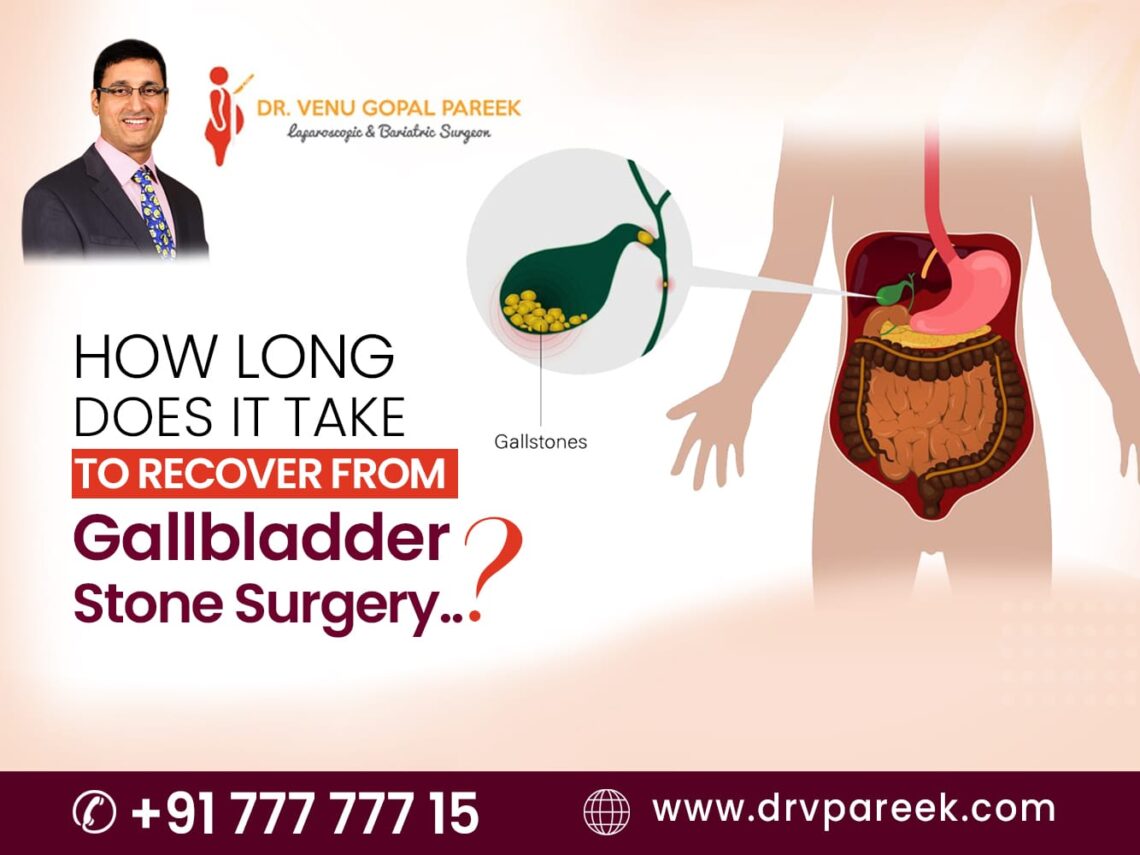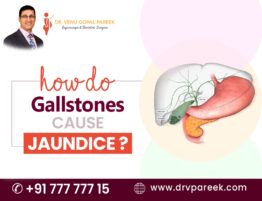
Gallstones are one of the most common reasons for gallbladder surgery. The gallbladder is a small pear-shaped organ situated beneath the liver. It is an important organ in storing and discharging bile juice, which is a liquid comprised of cholesterol, bilirubin, and bile salts. The liver produces this bile and it assists in the digestion of fats you eat daily.
Gallstones are hard pebble-like pieces formed out of digestive fluid (bile) in your gallbladder. Gallstones are of two different types which are cholesterol Stones & pigment Stones.
Cholesterol stones are the predominant type of gallstone, affecting over 80% of individuals. These stones typically have a yellowish hue and are developed when there is an excess of cholesterol and bilirubin, combined with low levels of bile salts in the bile. Symptoms include upper right abdominal pain and excessive weight loss.
Pigment stones often look like brown-black stones, developed by phosphorus, calcium, bilirubin, and carbonate. Formation of these stones is often associated with liver & blood disorders, are caused due to elevated bilirubin levels.
Gallbladder stones treatment
Treatment for gallstones is typically not necessary in most cases unless they are painful. It is also possible to pass gallstones unnoticed in many instances. However, if you experience pain or any other complication, your doctor will likely advise undergoing surgical intervention. Medication may be used in exceptional cases.
Both surgical and non-surgical treatment is available for treating gallbladder stones. Depending on your signs and symptoms and the outcome obtained from all diagnostic tests, your doctor will decide if surgical treatment for gallstones is necessary.
If surgery is necessary, cholecystectomy is the common surgical procedure mostly performed on adults, which involves removing the gallbladder. People can live a healthy life without a gallbladder. So it is removed completely to avoid recurring gallstones or prevent further complications.
Cholecystectomy can be performed in two different ways, Laparoscopic cholecystectomy, and open cholecystectomy.
Laparoscopic cholecystectomy
This is a common surgical procedure carried out under general anaesthesia. Typically, the surgery involves making three or four incisions in your abdomen. Through one of these incisions, the surgeon will insert a small instrument with a light on the head to inspect for stones and slowly remove your gallbladder by inserting some other devices from other incisions. If there are no complications observed, probably you can return home on the same day or the following day after the procedure.
Open cholecystectomy
Here in this surgical procedure, a single large incision is made to remove the gallbladder completely. Typically this procedure is suggested if there is any inflammation, infection, or scarring to the gallbladder. Sometimes a laparoscopic cholecystectomy may be converted to open if any problems occur during laparoscopy.
After the removal of your gallbladder, bile is redirected directly into your small intestine from the liver, bypassing the storage function of the gallbladder. Gallbladder removal does not hamper your ability to digest food. However, it may lead to temporary diarrhea as a potential side effect, which typically resolves over time.
Recovery from gallbladder stone surgery
The duration of recovery following gallbladder stone surgery depends on the chosen surgical approach, either laparoscopic or open cholecystectomy.
Following laparoscopic surgery, patients might be discharged within 24 hours. Generally, they can go back to their regular activities within a week or two depending on their work.
But in the case of open surgery, patients are kept under observation and usually need to stay for 2 to 3 days in the hospital depending on their health condition. Recovery time in these cases will be longer and patients might need complete bed rest for at least a month.
Typically, individuals can resume their regular activities within 3 to 4 weeks after gallbladder stone surgery. If the activities involve manual labour, it is advisable to wait for 6 to 8 weeks before engaging in such tasks.
After the surgery, it is advisable to consume light and small portions of meals and recommended to focus on low-fat food choices. It’s important to reach out to a doctor right away if you develop jaundice, loose stitches, fever, swelling, blood or pus in your stitches, breathing issues, or vomiting following the surgery.
Gallbladder removal surgery generally does not result in any long-term side effects. Temporary side effects following surgery are common and may include swollen, bruised, and painful wounds, a sick feeling due to anaesthetic or painkillers, abdominal and shoulder pain, bloating, flatulence, and diarrhoea. These effects are typically normal and should not raise significant concerns.
If you are suffering from gallbladder stones and looking for the best surgical or non-surgical gallbladder stone treatment in Hyderabad, consult Dr. V Pareek, one of the best laparoscopic surgeons in Hyderabad. He nearly has two decades of experience and is an expert in treating gallbladder stones. Call +91-91777-77715 right away to book your appointment with the doctor.







